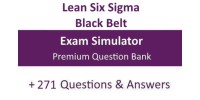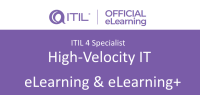The TOGAF® Standard, 10th Edition comprises:
- TOGAF® Fundamental Content
- TOGAF® Series Guides
The TOGAF® Fundamental Content is organized into six separate documents:
- Introduction and Core Concepts
Introduces the TOGAF® Standard, provides an executive overview, describes the TOGAF® documentation set, outlines core concepts, and includes common definitions for the standard - Architecture Development Method (ADM)
Describes the TOGAF® ADM, which is an iterative approach to developing an Enterprise Architecture - ADM Techniques
Contains a collection of techniques available for applying the TOGAF® approach and the TOGAF® ADM - Applying the ADM
Contains guidelines for adapting the TOGAF® ADM to address the specific style of architecture required in a practical context - Architecture Content
Describes the TOGAF® Content Framework and a structured metamodel for architectural artifacts, as well as an overview of typical architecture deliverables - Enterprise Architecture Capability and Governance
Discusses the organization, processes, skills, roles, and responsibilities applicable to an Enterprise Architecture team, and describes an Enterprise Architecture governance framework
The TOGAF® Series Guides give advice on how to configure and, at times, extend the TOGAF® Fundamental Content to suit a given context.
The TOGAF® Series Guides cover a range of topics, from general how-to and guidance on establishing an Enterprise Architecture team, to domain-specific material for Business and Security Architecture, and application with Agile methods and Agile software development.
- A Practitioners’ Approach to Developing Enterprise Architecture Following the TOGAF® ADM
- Using the TOGAF® Standard in the Digital Enterprise
- Digital Technology Adoption: A Guide to Readiness Assessment and Roadmap Development
- The TOGAF® Leader’s Guide to Establishing and Evolving an EA Capability
- Enabling Enterprise Agility
- Applying the TOGAF® ADM using Agile Sprints
- Business Capabilities, Version 2
- Business Models
- Business Scenarios
- Information Mapping
- Organization Mapping
- Value Streams
- Information Architecture: Customer Master Data Management (C-MDM)
- Integrating Risk and Security within a TOGAF® Enterprise Architecture
- Architecture Maturity Models
- Architecture Project Management
- Architecture Skills Framework
- Digital Business Reference Model (DBRM)
- Government Reference Model
- Microservices Architecture (MSA)






